How to turn a DESTINATION into a SOURCE
Scope
This article shows you how to listen to or record a Destination on an xNode over the Livewire network, by turning that Destination into a new Source.
Description
In the Axia ecosystem, the input of a device is converted to a Source and sent out to the Livewire network. A Source (such as a microphone) is simply a multicast audio stream that is available for other devices (such as xNodes, consoles, etc.) to receive and listen to.
In order to "listen" to the Source, it must be put into the Destination of another Axia device. The Destination is the mechanism which converts the audio stream into either (1) an analog or digital output on a receiving device, or (2) a virtual output on a computer (i.e.: Axia IP Driver outputting audio from the network into Adobe Audition).
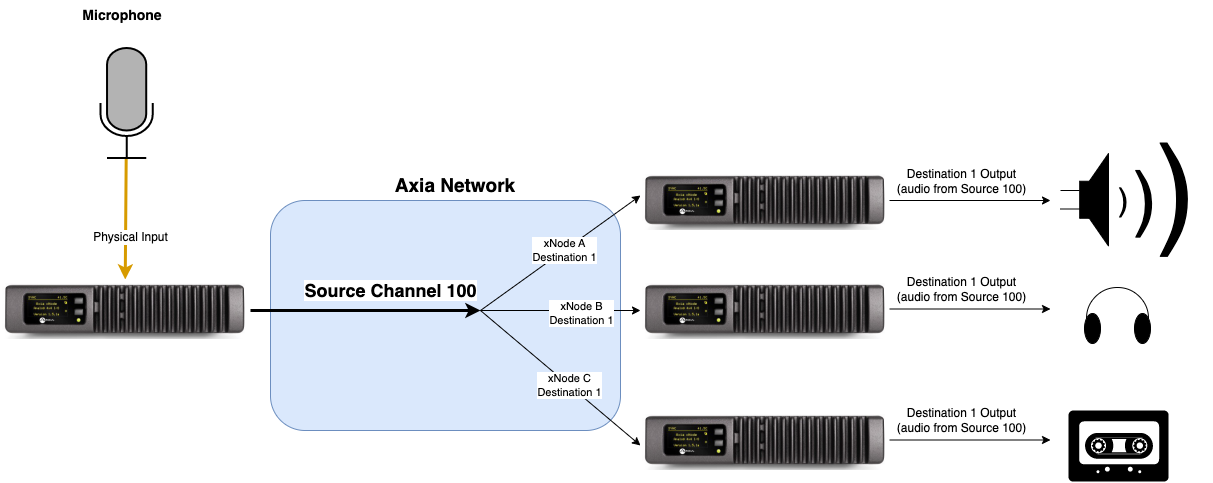
Due to a variety of reasons, some customers have asked if it's possible to listen to or record the Destination on an Axia device, such as an xNode.
The short answer to this question is no, it is not possible to listen to the Destination directly, as a Destination is simply a landing place for a Source. BUT, there is a way to achieve the same result. The process is a little different and can only be done using an xNode at the time this article was written.
The Problem
Technically speaking, a Destination does not send any audio stream to the network, so there is not a way to listen to it natively. This isn't necessarily a problem, rather the reality of how the Axia system is designed.
For example, notice in the illustration how the microphone is able to send an audio stream across the network, because it has first been converted to a Source (by plugging it into the xNode input).
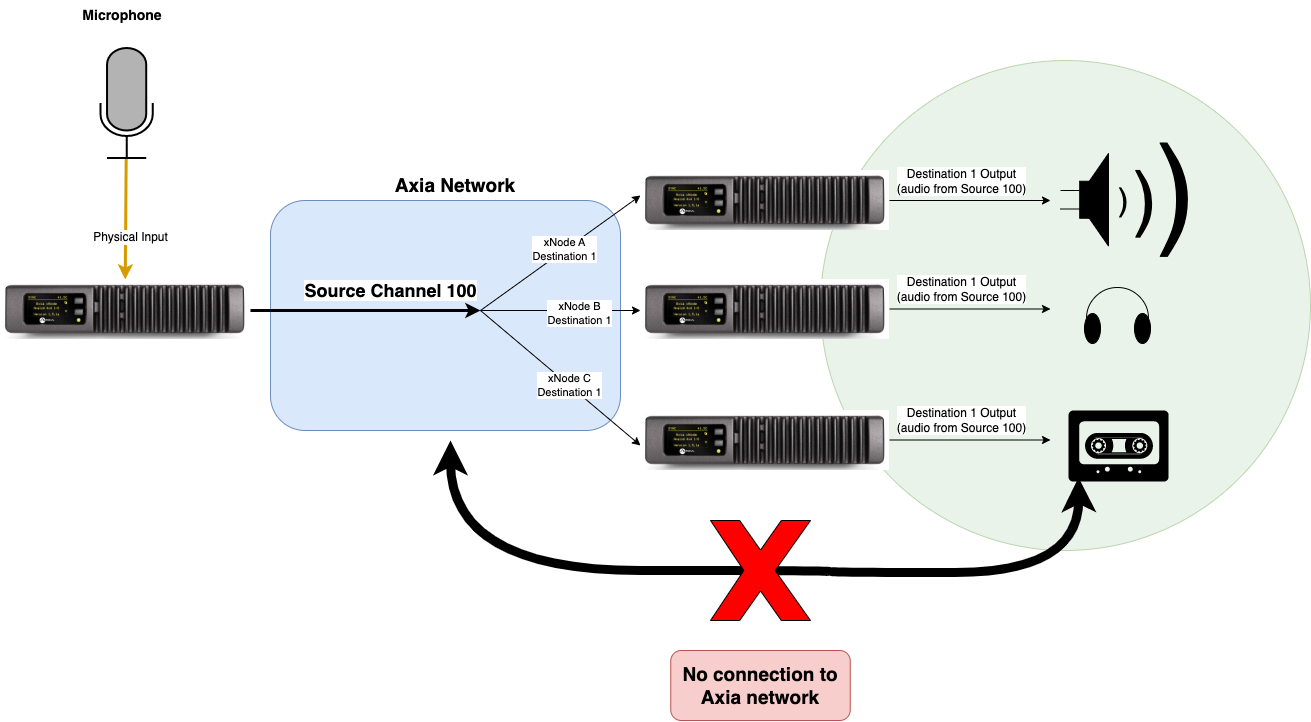
The Destination, on the other hand, is just the landing place of that Source, and it does not "re-stream" itself back to the network. It only has an analog connection to the speaker, headphones, or recorder.
It's a good question, however, think about it from the standpoint of resource management.
Livewire utilizes multicast to send audio from device to device through a network switch. Each time a multicast audio stream is generated, it taxes the resources of the sending device (xNode, IP Driver, etc.), but mostly the resources of the network switch.
As more streams are generated, more available bandwidth is consumed, and more strain is put on the IGMP querier (your core switch) to manage all these streams. If each device "re-streamed" their Destinations as another Source, the stream count on your network would almost double.
Aside from that, there aren't many times when listening to a Destination is necessary or cannot be achieved by other methods (as we'll see below).
The Workaround
As mentioned, only Sources can be received or "listened to" on the Livewire network. Therefore, if we want to receive a Destination, we must either:
- Mirror the channel that is on that Destination, or
- Use the mixer in the xNode to create a 2nd source on the network that can be received.
To illustrate this, we will use the example of Bob, whose xNode output (Destination) is connected to his transmitter site. For legal reasons, Bob wants to record the Destination of his xNode BEFORE it sends to his transmitter site, and he wants to record it to his iProfiler machine, which is using an IP driver.
Method #1
Bob can simply put the same Livewire channel number in his iProfiler machine that he has in his xNode Destination. For example, if he is sending channel 100 to the xNode output, then he can put "100" in his iProfiler machine, and it will record the exact same audio.
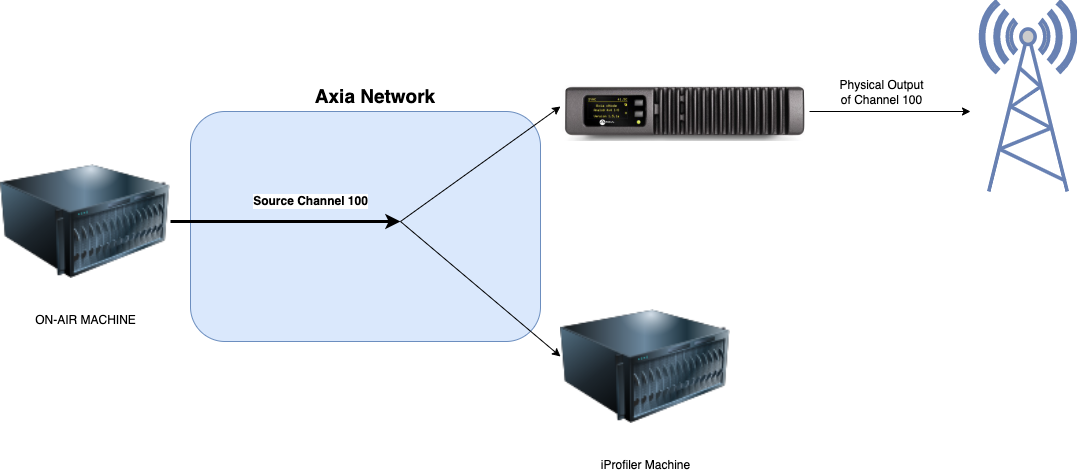
However, if the audio channel that is sent to the xNode ever changes to another channel (such as 200), then the iProfiler recording would not be accurate.
Method #2
Bob's requirements are a little more strict. He must record the audio from the Destination itself so there is no question about what was sent to the transmitter site. However, since a Destination cannot be streamed back into the Livewire network, he will need to turn it into a NEW Source by using the built-in Mixer on the xNode.
Let's assume the original Source that Bob is receiving on the xNode's Destination is channel 100:
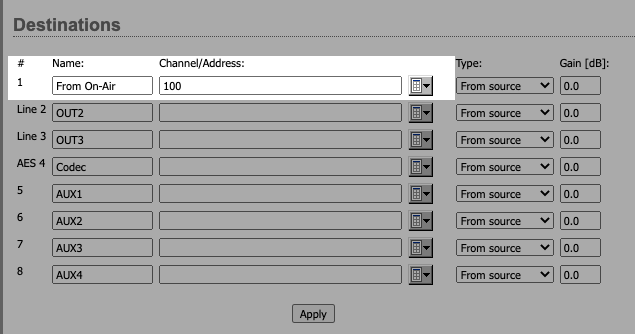
If we navigate over to the Mixer section of the xNode, we see that we can route this Destination audio back to the network as a Source. To do this, we first have to put the xNode in a Mix/Custom mode (on the "Simple Setup" page):

Alternatively, you can press "Enable custom mode" from the Mixer page:
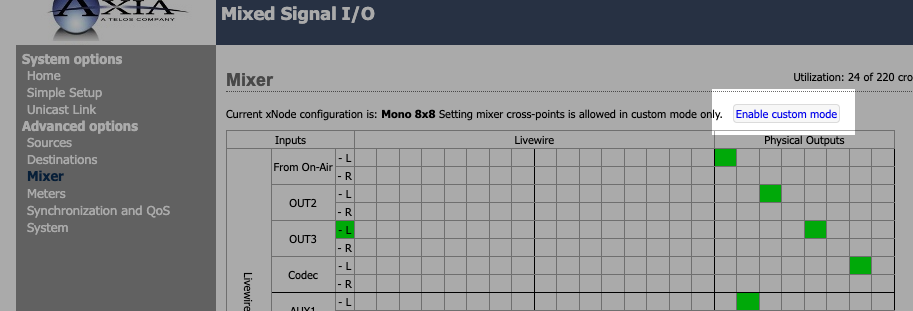
Once Mix/Custom mode has been enabled, you'll be able to make changes to the cross-point mixer.
First, notice that your Inputs are listed on the left-hand side, and the Outputs are listed on the bottom.
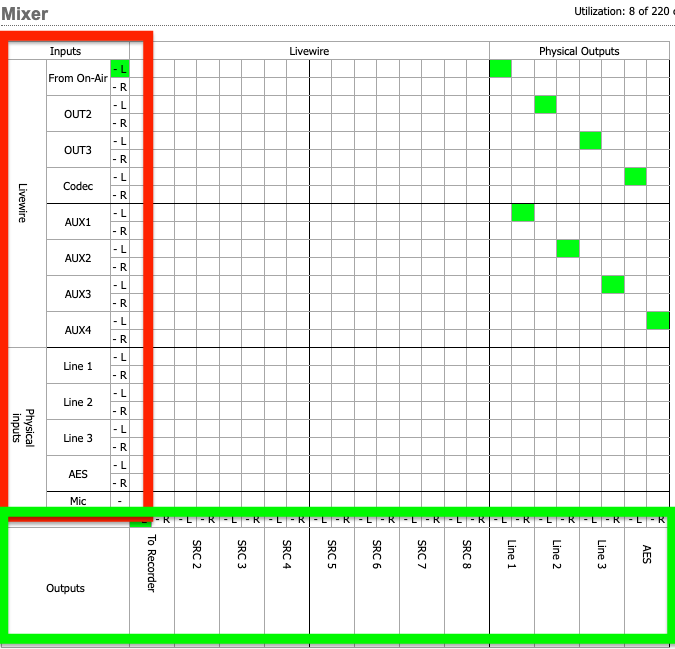
Find the point that connects the Input (Destination) to the Output (Source), click on that square, and then click "0dB." You will need to do this for the left channel and for the right channel.
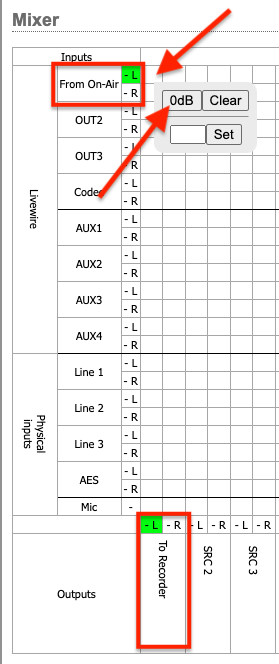
In this example, the input called "From On-Air" has been routed to the output called "To Recorder"

Finally, set your Source channel to a unique number. In the illustration below, we've set the channel to 200
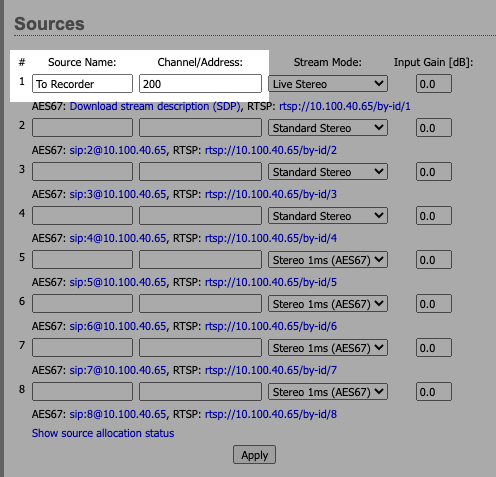
Livewire channel 200 is now streaming on the network, and it will mirror whatever is put into Destination/output 1 on the xNode. In other words, anytime that Destination changes, the audio streaming on channel 200 will change with it (without changing the channel number).
In our example, Bob can now put channel 200 into the Destination on his iProfiler machine and be sure that it is recording exactly what the xNode is outputting.
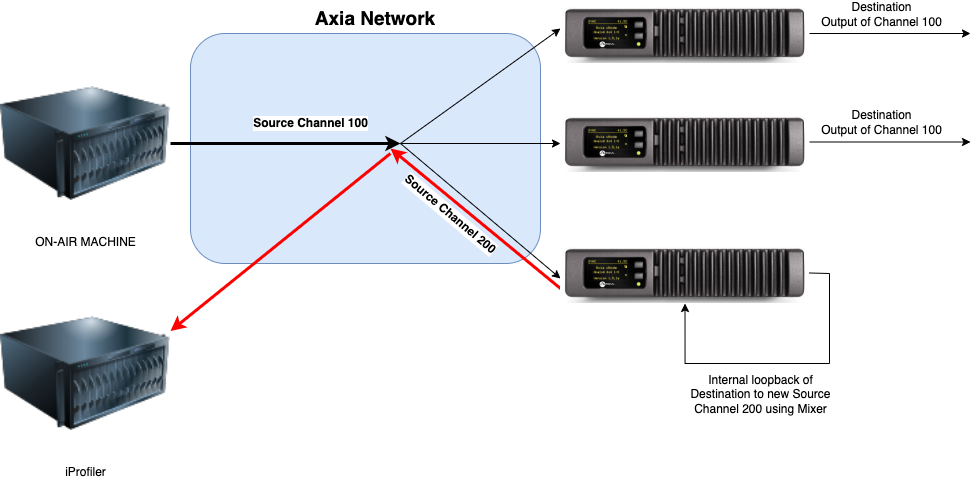
For example, if you have an analog xNode with 8, mono inputs, then using this method will only allow you to utilize 7 of those 8 analog inputs discretely.
Conclusion
Method #1 above is the easiest way to mirror a source to another Destination, and in fact, it's the preferred and recommended method within the Livewire network. However, if there are special circumstances, and you need to "listen" to the Destination itself, Method #2 is a helpful workaround.
Let us know how we can help
If you have further questions on this topic or have ideas about improving this document, please contact us.
